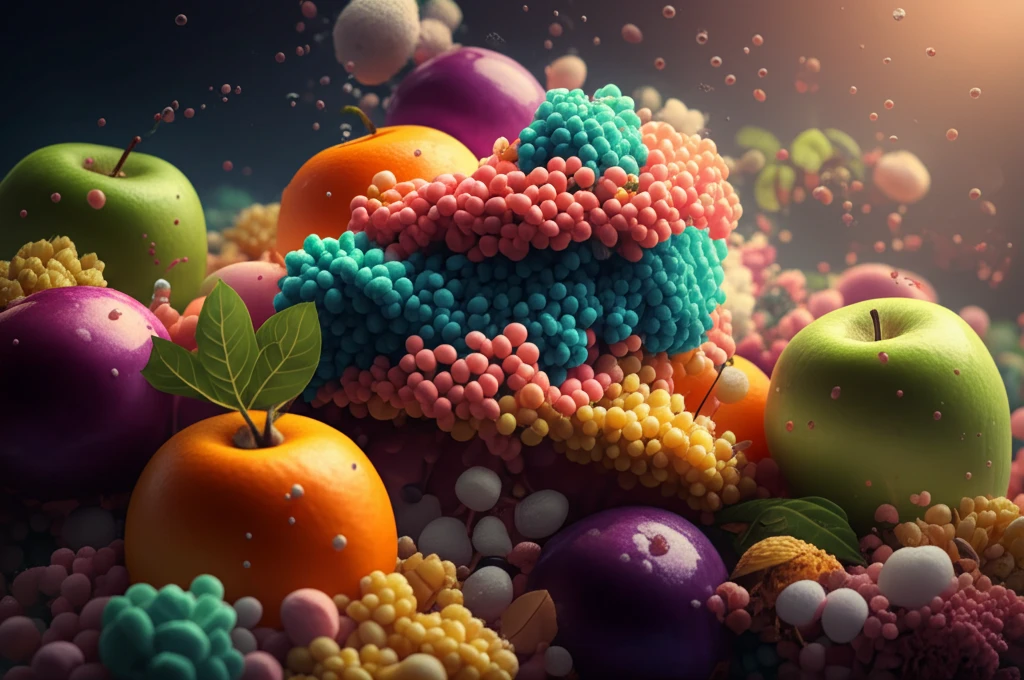
The Future of Eco-Friendly Packaging: How Modified Cellulose Nanocrystals are Revolutionizing Sustainability
"Discover how scientists are enhancing biodegradable plastics with advanced cellulose nanocrystals for stronger, more sustainable packaging solutions."
In a world increasingly focused on sustainability, the quest for eco-friendly materials has never been more critical. Among the myriad of options, cellulose, one of nature's most abundant polymers, stands out as a promising candidate. With an annual production of approximately 7.5 × 10^10 tons, cellulose offers numerous advantages, including low cost, widespread availability, non-toxicity, and biodegradability. It’s a versatile biopolymer composed of over 10,000 repeating units of β-(I → 4)-D-glucose linkages, making it a strong contender in the effort to replace traditional plastics.
One exciting development in this field is nanocellulose, a derivative of cellulose that comes in two primary forms: cellulose nanocrystals (CNCs) and nanofibrillated cellulose (NFC). CNCs, in particular, are crystalline domains isolated from cellulose fibers through acid hydrolysis. These tiny crystals possess highly ordered structures that can significantly enhance the thermal, mechanical, and barrier properties of various materials. By modifying natural and synthetic polymers with CNCs, we can unlock a range of interesting characteristics, from improved electrical and optical properties to enhanced magnetic and dielectric capabilities.
The use of CNCs as reinforcing agents extends to various biodegradable polymer matrices, such as thermoplastic starch (TPS) and polyhydroxyalkanoates (PHAs). Starch, a natural polysaccharide consisting of amylose and amylopectin, is readily available from sources like maize, cassava, and potatoes. When starch granules are plasticized through thermal and/or mechanical energy, along with the addition of a plasticizer, they form TPS films. While TPS films offer low permeability to gases like oxygen and carbon dioxide, they are also vulnerable to water vapor and tend to have weak mechanical properties. This is where CNCs come in, offering a potential solution to reinforce TPS films and create nanocomposites suitable for industrial applications, especially in packaging.
Revolutionizing Packaging with Modified Cellulose Nanocrystals

A recent study investigated the effects of sulfated (original), carboxylated (oxidized), and Jeffamines M2005-grafted cellulose nanocrystals (CNCs) on the properties of thermoplastic starch (TPS) and poly(3-hydroxybutyrate) (P(3HB)) matrices. Researchers aimed to enhance the barrier and mechanical properties of these materials, making them more suitable for eco-friendly packaging. First, the CNCs were oxidized via a catalytic reaction using NaCIO and then grafted with an amine-terminated ethylene oxide (EO)/propylene oxide (PO) copolymer (Jeffamine) by an amine-acid coupling reaction.
- Enhanced Mechanical Properties: Incorporating modified CNCs significantly improves the strength and durability of TPS and P(3HB) matrices.
- Improved Barrier Properties: The resulting nanocomposites exhibit excellent barrier properties, protecting packaged contents from external elements.
- Chemical Compatibility: Achieving chemical compatibility between CNCs and polymer matrices is crucial for producing attractive nanocomposites.
- Versatile Applications: The modified CNCs can be tailored for various industrial applications, offering a sustainable alternative to traditional plastics.
The Path Forward: Embracing Sustainable Packaging Solutions
The research demonstrates that chemically modified CNCs hold immense potential for revolutionizing the packaging industry. By tailoring the properties of CNCs to match those of polymer matrices like TPS and P(3HB), we can create high-performance, eco-friendly materials that reduce our reliance on traditional plastics. As consumer demand for sustainable products continues to grow, innovations like these will play a crucial role in shaping a greener future. From food packaging to industrial materials, modified cellulose nanocrystals offer a versatile and effective solution for creating a more sustainable world.
